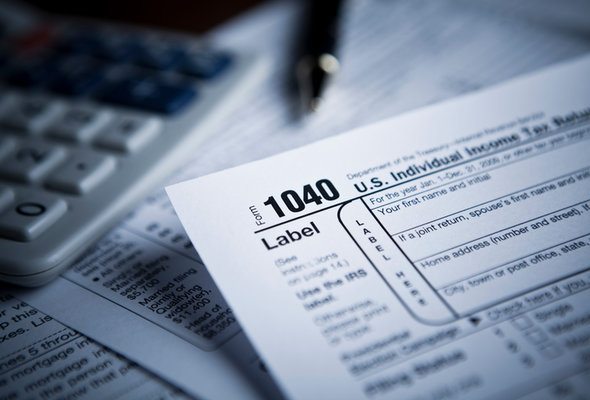The federal income tax rates remain unchanged for the 2024 tax year at 10%, 12%, 22%, 24%, 32%, 35% and 37%. The income thresholds for each bracket, though, are adjusted slightly every year for inflation. Here’s a breakdown that will show the differences between tax year 2023 (filed by April 15, 2024) and tax year 2024 (filed by April 15, 2025).
A financial advisor can help you optimize your financial plan to potentially lower your tax liability.
Have Questions About Your Taxes?
A financial advisor may be able to help. Match with an advisor serving your area today.
Get Started NowFederal Income Tax Brackets Overview
The U.S. currently has seven federal income tax brackets, with rates of 10%, 12%, 22%, 24%, 32%, 35% and 37%. If you’re one of the lucky few to earn enough to fall into the 37% bracket, that doesn’t mean that the entirety of your taxable income will be subject to a 37% tax. Instead, 37% is your top marginal tax rate.
With a marginal tax rate, you pay that rate only on the amount of your income that falls into a certain range. To understand how marginal rates work, consider the bottom tax rate of 10%. For single filers in 2024, all income between $0 and $11,600 is subject to a 10% tax rate. If you have $11,800 in taxable income in 2024, the first $11,600 is subject to the 10% rate and the remaining $200 is subject to the tax rate of the next bracket (12%).
Check out the chart below to see what your top marginal tax rate is for the tax year 2024, which will be filed by April 2025:
2024 Federal Tax Brackets
| Rate | Single | Married Filing Jointly | Married Filing Separately | Head of Household |
|---|---|---|---|---|
| 10% | $0 – $11,600 | $0 – $23,200 | $0 – $11,600 | $0 – $16,550 |
| 12% | $11,600 – $47,150 | $23,200 – $94,300 | $11,600 – $47,150 | $16,550 – $63,100 |
| 22% | $47,150 – $100,525 | $94,300 – $201,050 | $47,150 – $100,525 | $63,100 – $100,500 |
| 24% | $100,525 – $191,950 | $201,050 – $383,900 | $100,525 – $191,950 | $100,500 – $191,950 |
| 32% | $191,950 – $243,725 | $383,900 – $487,450 | $191,950 – $243,725 | $191,950 – $243,700 |
| 35% | $243,725 – $609,350 | $487,450 – $731,200 | $231,251 – $365,600 | $243,700 – $609,350 |
| 37% | $609,350+ | $731,200+ | $365,600+ | $609,350+ |
Now, for a comparison, here is the chart with tax brackets for the 2023 tax year, which were due in April 2024:
2023 Federal Tax Brackets
| Rate | Single | Married Filing Jointly | Married Filing Separately | Head of Household |
|---|---|---|---|---|
| 10% | $0 – $11,000 | $0 – $22,000 | $0 – $11,000 | $0 – $15,700 |
| 12% | $11,001 – $44,725 | $22,001 – $89,450 | $11,001 – $44,725 | $15,701 – $59,850 |
| 22% | $44,726 – $95,375 | $89,451 – $190,750 | $44,726 – $95,375 | $59,851 – $95,350 |
| 24% | $95,376 – $182,100 | $190,751 – $364,200 | $95,376 – $182,100 | $95,351 – $182,100 |
| 32% | $182,101 – $231,250 | $364,201 – $462,500 | $182,101 – $231,250 | $182,101 – $231,250 |
| 35% | $231,251 – $578,125 | $462,501 – $693,750 | $231,251 – $346,875 | $231,251 – $578,100 |
| 37% | $578,126+ | $693,751+ | $346,876+ | $578,101+ |
In rare cases, such as when one spouse is subject to tax refund garnishing because of unpaid debts to the state or federal government, opting for the “Married filing separately” tax status can be advantageous. Typically, though, filing jointly provides a tax break.
Only single people should use the single filing status. Single taxpayers who have dependents, though, should file as “Head of Household.” To qualify for this filing status, you must pay more than half of household expenses, be unmarried and have a qualifying child or dependent.
How the Marginal Federal Tax Brackets Work
In the U.S., income is taxed progressively with higher tax brackets than in most other nations. Not all income is treated equally, as the more you earn the higher percentage you end up contributing in taxes. All brackets work on a taxable income basis, not necessarily the actual amount of money earned in a given year.
Once all deductions are accounted for, and tax credits awarded, then the leftover income total is your taxable income. That income falls into a tax bracket and you pay the percentage within that bracket.
The easiest thing to do is to use SmartAsset’s free income tax calculator, but here are some tips to keep in mind if you’re estimating your own taxes:
- Actual taxes paid: The tax you owe could vary based on where your income comes from and how it is broken up. Your entire income won’t necessarily be taxed at your tax bracket rate.
- Income thresholds: The income thresholds for the federal tax brackets are updated and change annually. This is done to account for inflation.
- Effective tax rate: Your effective tax rate is the percentage of your taxable income that you’ll pay in taxes. You can calculate this by dividing your tax owed by your total income. This is what you’ll pay.
If someone asks you for your tax bracket, the person is almost certainly asking for your top marginal tax rate. That’s why, when you’re reading the news, you’ll hear references to “filers in the top bracket” or maybe “taxpayers in the 37% bracket.” America’s top federal income tax bracket varies over time quite a bit. It’s hard to believe now, but top federal income tax rates were once as high as 92%.
Understanding the Current Federal Income Tax Brackets

Our current tax brackets were adjusted when Congress passed new legislation in 2017 that changed the brackets and how taxes are filed. The tax reform passed by President Trump and Congressional Republicans lowered the top rate for five of the seven brackets. It also increased the standard deduction to nearly twice its 2017 amount.
For the 2024 tax year, the standard deduction is $29,200 for married couples who file jointly and $14,600 for both single filers and married filers who file separately. The standard deduction for heads of household is $21,900.
For the 2023 tax year, the standard deduction was $27,700 for married couples filing jointly and $13,850 for single filers and married filers who file separately. Heads of household had a standard deduction of $20,800 in tax year 2023.
Bottom Line

Tax filers will need the 2024 federal income tax brackets when they file taxes in 2025. Your top tax bracket doesn’t just depend on your salary. It also depends on other sources of income (such as interest and capital gains) and your deductions. Depending on where you fall within a tax bracket, deductions could knock you into a lower tax bracket, reducing your tax liability or increasing the size of your tax refund.
Tips for Tax Filing
- If you’re precise with numbers and good at record-keeping, you’re probably fine using tax preparation software. But if you want help to minimize your tax liability, a financial advisor with tax expertise can help. Finding a financial advisor doesn’t have to be hard. SmartAsset’s free tool matches you with up to three vetted financial advisors who serve your area, and you can have a free introductory call with your advisor matches to decide which one you feel is right for you. If you’re ready to find an advisor who can help you achieve your financial goals, get started now.
- If you need more time to file your taxes, you can use Form 4868 to get a maximum extension of six months from the April 15 deadline (to October 15.) But remember, this extension does not apply to payments. So if you owe taxes, you should estimate what you owe and pay what you can to avoid a penalty and interest.
Photo credit: ©iStock.com/wernerimages, ©iStock.com/elenaleonova, ©iStock.com/Pgiam
